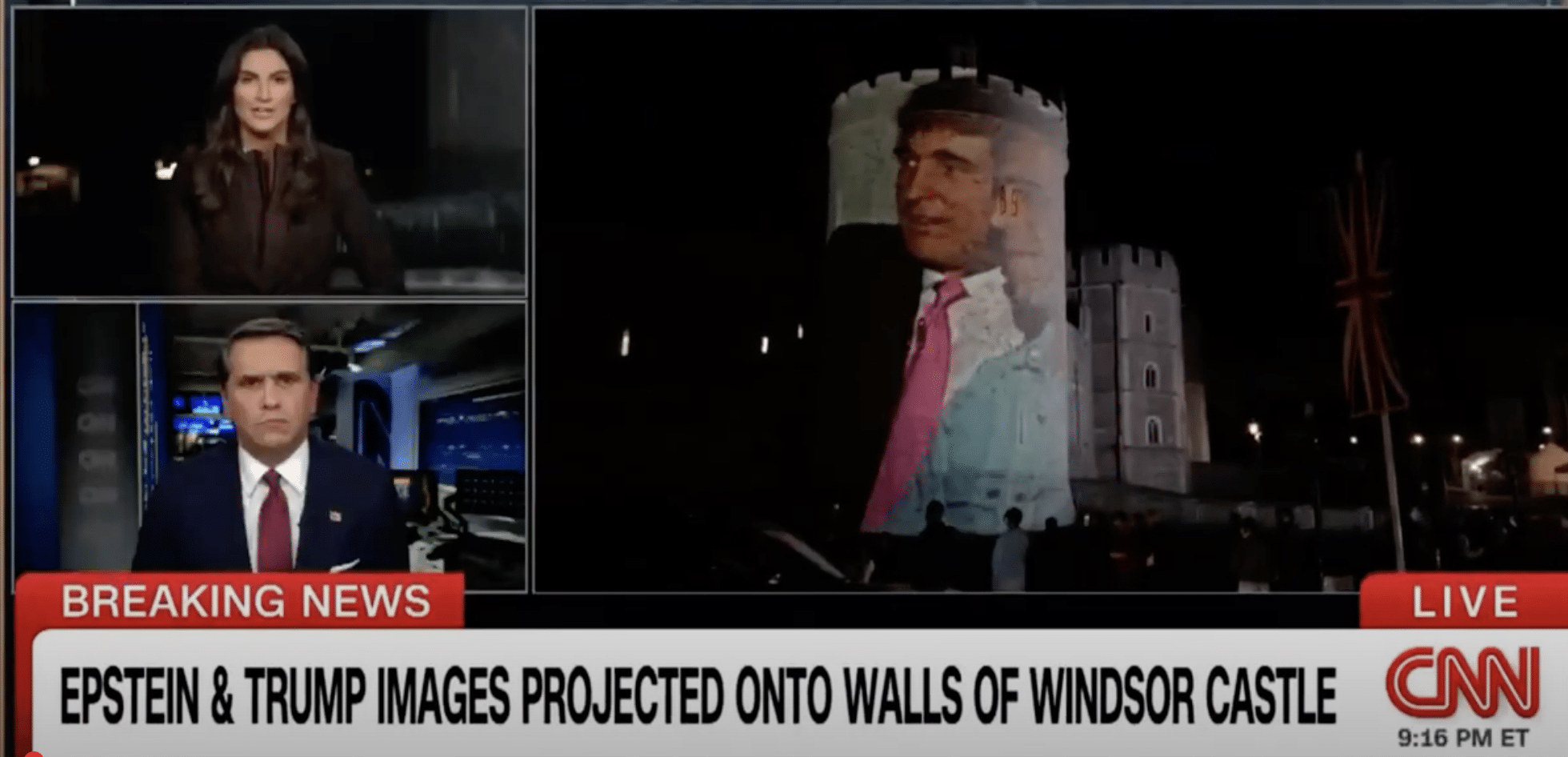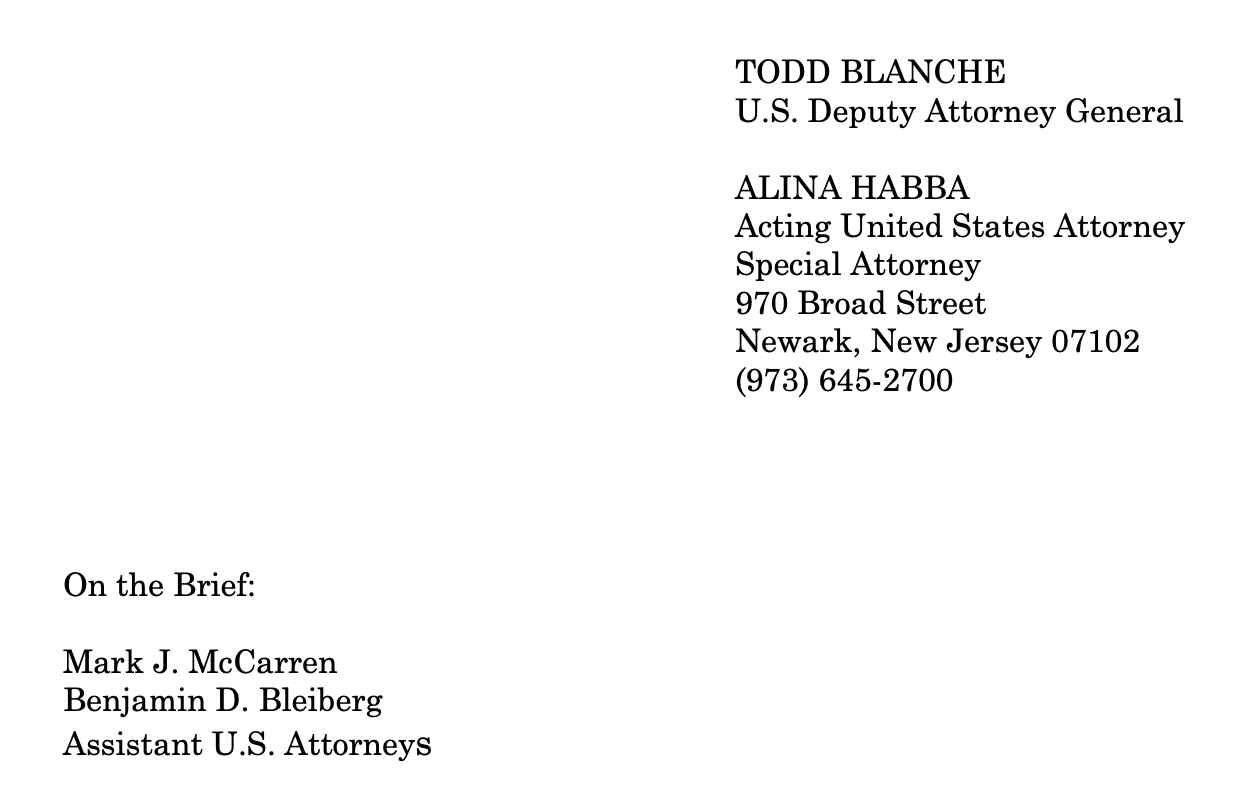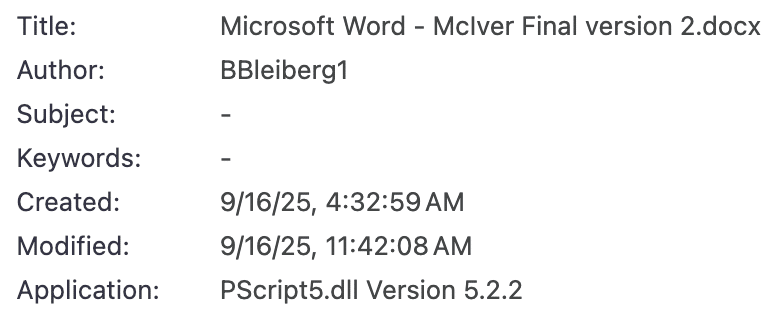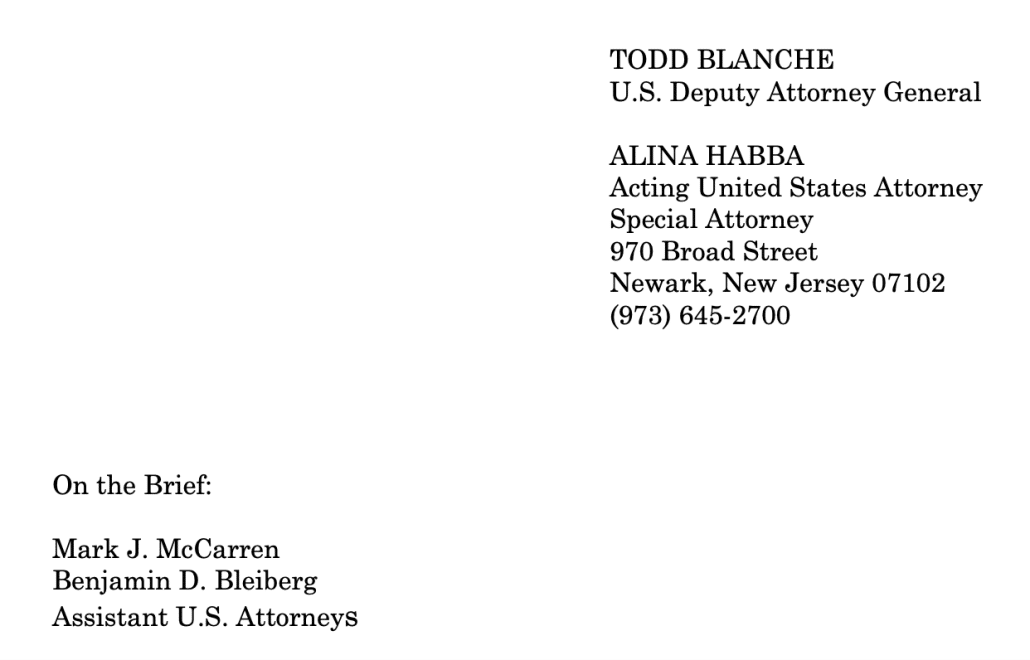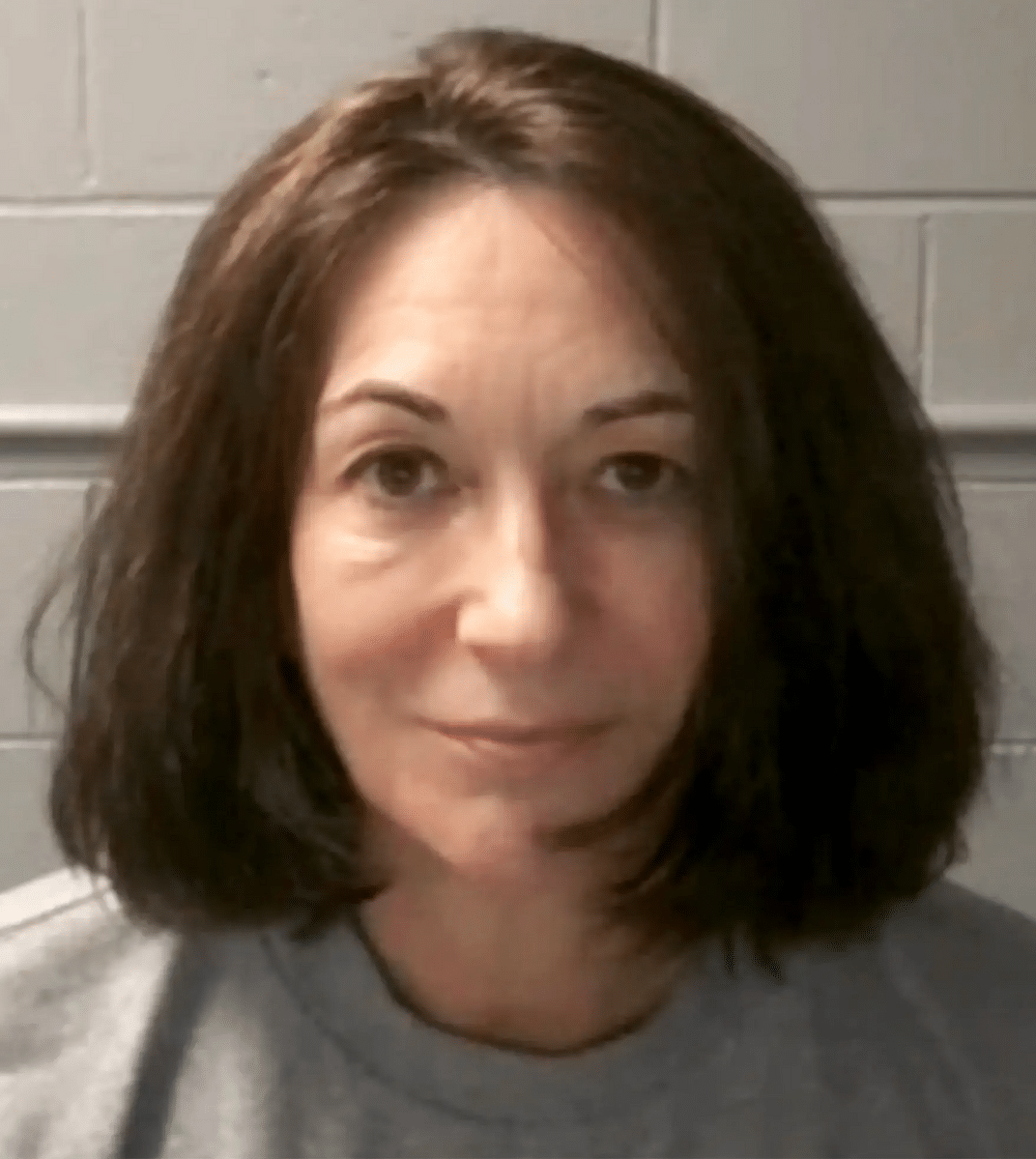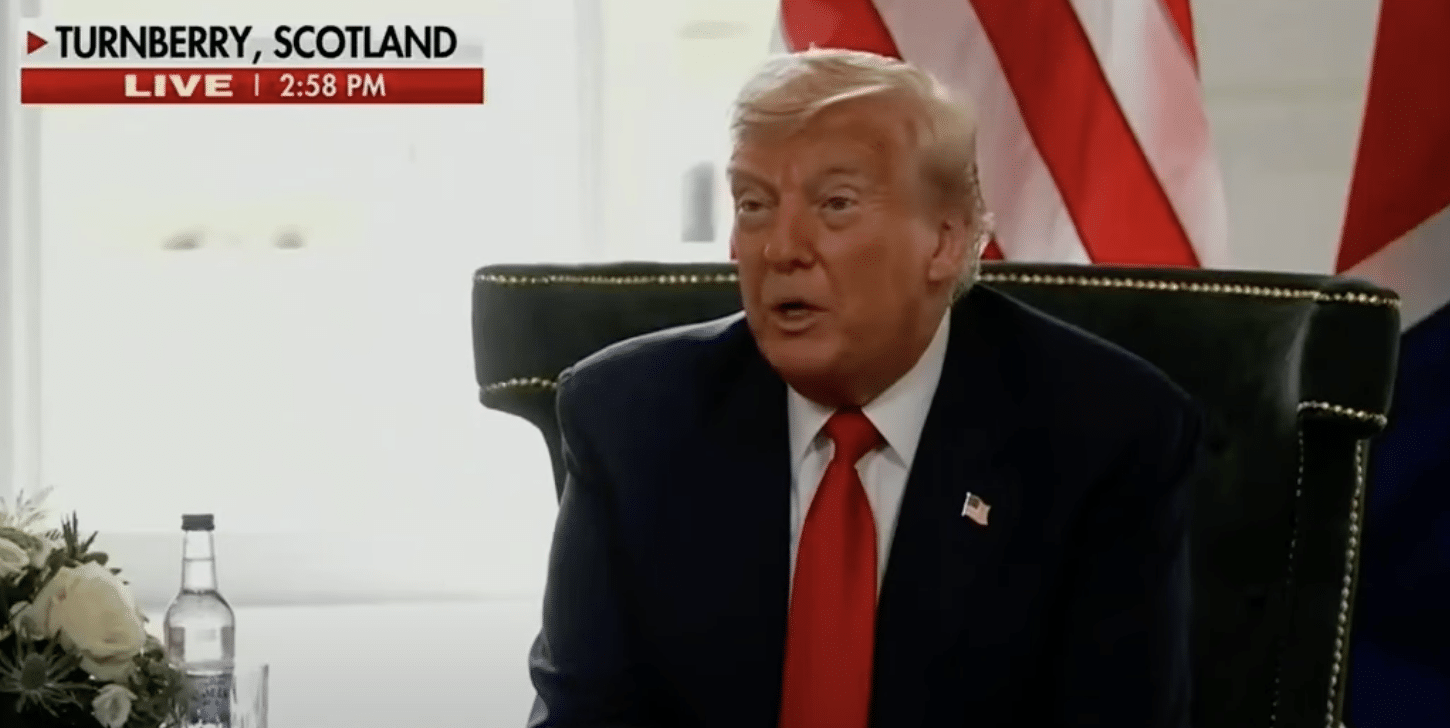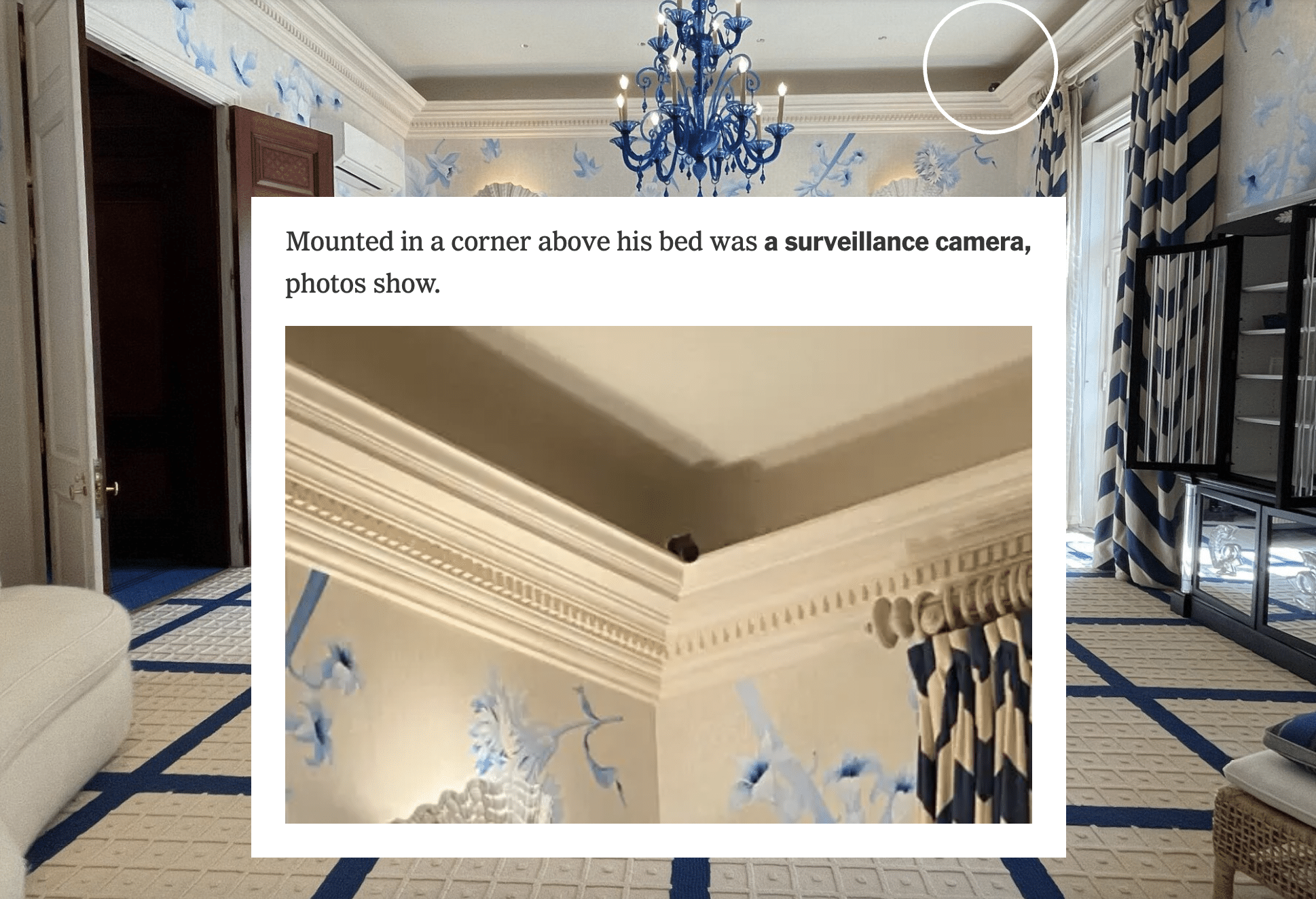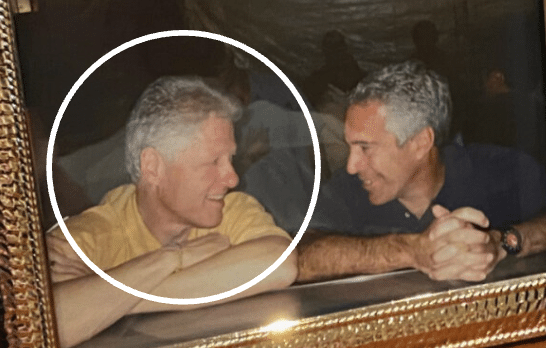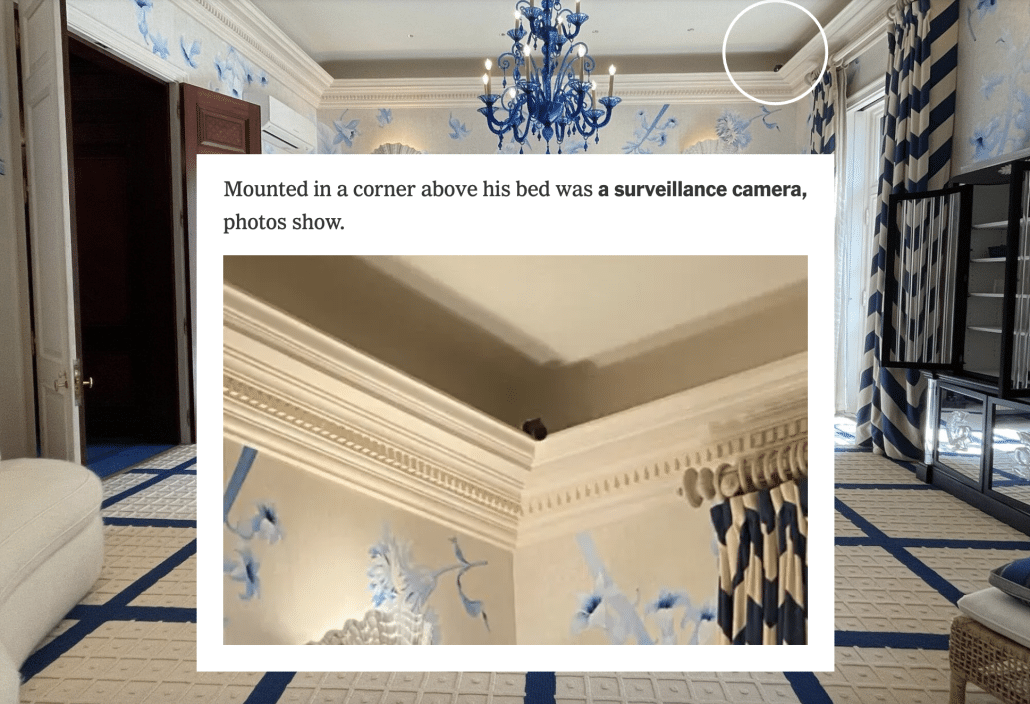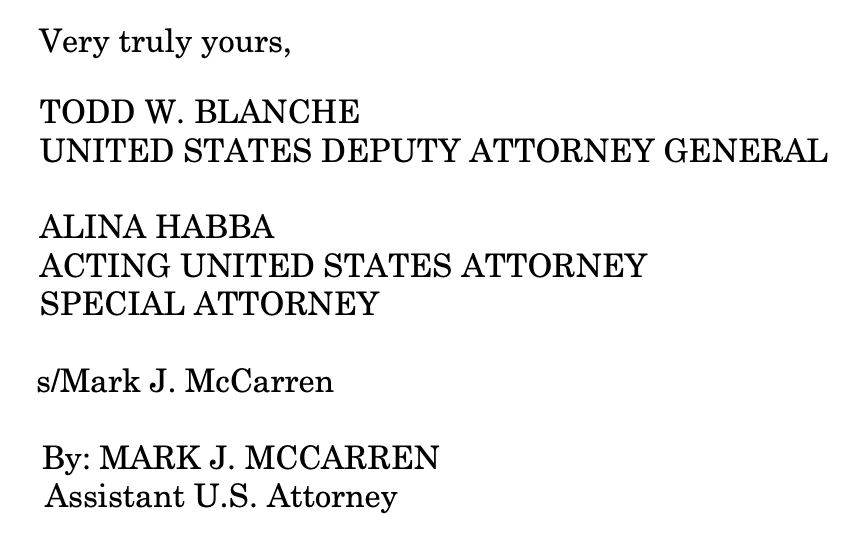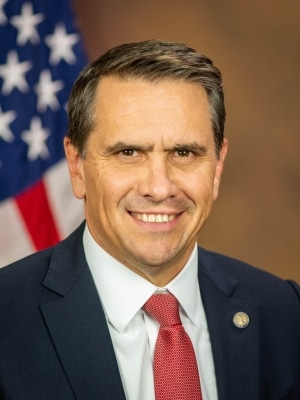The “Boo Boos” and Bovino Bullshit DHS Uses to Criminalize Scrutiny
I had been meaning to return to the parts of DOJ’s omnibus response to LaMonica McIver’s motions to dismiss her indictment anyway.
And then the following things happened:
Brayan Ramos-Brito
After Brayan Ramos-Brito was arrested for being assaulted by a Border Patrol officer, after he was held in pretrial detention for a week based on several claims that DOJ later admitted were lies (including that he said he was going to grab guns and shoot the agents, when he actually said he was going to fuck up the border patrol agents), after the initial felony assault charge was dismissed and then charged as a misdemeanor (first on something inaccurately called an indictment, and only later as an Information), and after getting several adverse rulings on motions in limine, Ramos-Brito was acquitted on Wednesday. 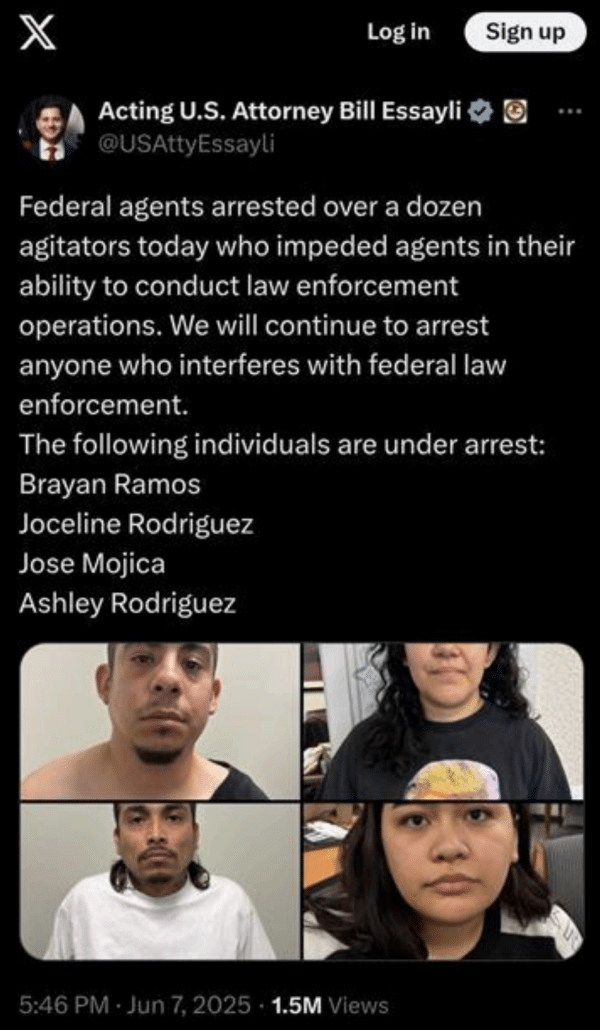
According to LAT, a juror said Ramos-Brito was acquitted because the government presented no video evidence showing the assault. Which means senior Border Patrol official, Gregory Bovino, destroyed his credibility for naught.
U.S. Border Patrol Sector Chief Gregory Bovino — the brash agent who led a phalanx of military personnel into MacArthur Park this summer — was called as a witness Wednesday in a federal misdemeanor assault case against Brayan Ramos-Brito, who was accused of striking a federal agent.
Bovino, who flew in to testify from Chicago, the latest city targeted for an immigration enforcement surge, said he witnessed the alleged assault committed by Ramos-Brito in Paramount on June 7.
Bovino was questioned by the defense about previous comments he made referring to undocumented immigrants as “scum.”
[snip]
On a cross-examination, federal public defender Cuauhtemoc Ortega questioned Bovino about being the subject of a misconduct investigation a few years ago and receiving a reprimand for referring to undocumented immigrants as “scum, filth and trash.”
Bovino said he was referring to “a specific criminal illegal alien” — a Honduran national who he said had raped a child and reentered the United States and had been caught at or near the Baton Rouge Border Patrol station.
“I said that about a specific individual, not about undocumented peoples, that’s not correct,” he said.
Ortega pushed back, reading from the reprimand, which Bovino signed, stating that he was describing “illegal aliens.”
“They did not say one illegal alien,” Ortega said. “They said you describing illegal aliens, and or criminals, as scum, trash and filth is misconduct. Isn’t that correct?”
“The report states that,” Bovino said.
Not only did Bovino lead the staged invasion of MacArthur Park (which featured in Charles Breyer’s opinion ruling that DOD had violated the Posse Comitatus Act), but he’s the one who tried to menace Gavin Newsom during his announced plan to redistrict California. And he was caught lying to a jury.
Among the things Ramos-Brito was not permitted to do was conduct attorney-led voir dire to find out if anyone had seen Acting US Attorney Bill Essayli’s false propaganda about the arrests, posted on Xitter the day of the incident and still posted today, even after the dismissals and acquittal — yet more lies DHS and DOJ have told about the assaults that DHS officers have caused.
Sydney Reid
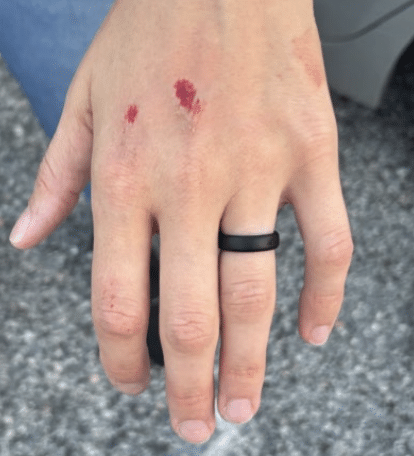 Meanwhile, in DC, DOJ asked to prevent Sydney Reid, who was accused of assaulting FBI agent Eugenia Bates while she was filming the ICE arrest of two people at the DC jail, from introducing the following evidence at trial:
Meanwhile, in DC, DOJ asked to prevent Sydney Reid, who was accused of assaulting FBI agent Eugenia Bates while she was filming the ICE arrest of two people at the DC jail, from introducing the following evidence at trial:
- That Bates called her “boo boos,” “boo boos”
- That Bates twice complained that she had to turn this thing into an assault charge:
- “I’m going to the attorneys [sic] office for a bystander that I tussled. Dinko arrested her for ‘assault’ ughhh”;
- “Do you want the arrest EC separate from the ‘assault’ or am I good to put it in together in one 302”
- That she called Reid a “lib tard”
The government appears to have no complaint if Reid introduces Bates comment that she said of her “boo boos:” “I sacrificed life and limb for the mission. I think it’s worth a trump coin,” which Reid included in her response.
Still, DOJ badly wants to prevent Reid from presenting evidence that not even Bates believed this was an assault.
Brad Lander
Yesterday, the government arrested Brad Lander, again, along with dozens of others, once again for protesting the treatment of ICE targets inside Federal Plaza.
At least 11 elected officials were arrested Thursday while protesting conditions at an immigration holding facility in Manhattan where a federal judge this week extended a court order requiring the government to shape up its treatment of detainees.
The officials, including Comptroller Brad Lander, Public Advocate Jumaane Williams, State Senator Julia Salazar and Assemblywoman Jessica Gonzalez-Rojas, were among dozens of people detained during protests at 26 Federal Plaza. The government building, home to immigration court, the FBI’s New York field office and other federal offices, has become a hotbed of arrests and detention amid President Donald Trump’s crackdown on illegal immigration.
Several officials were arrested inside the building while attempting to inspect holding rooms on the 10th floor that are the subject of ongoing litigation alleging squalid conditions and overcrowding, according to a coalition of politicians, advocates and faith leaders involved in the protest.
The arrests came in the wake of an order from Judge Lewis Kaplan requiring that DHS treat those being held at 26 Federal Plaza humanely.
The Court’s preliminary injunction will not prevent defendants from pursuing the policies they have set. It merely will require that they conform to the demands of the Constitution in doing so. It is up to defendants to choose whether they wish to expend resources to conform 26 Fed to those requirements, or to alter the rate at which they are funneling arrestees into 26 Fed and other facilities, or to select or obtain facilities where detainees can be held in a humane and constitutional manner.
Here, plaintiff has demonstrated clear and imminent irreparable harm in the absence of a preliminary injunction and a likelihood of success on the merits of his First and Fifth Amendment claims arising from the substandard conditions and barriers to attorney-client communication at 26 Fed. Because the injunction would halt ongoing constitutional injuries while merely requiring adherence to standards defendants have already adopted for their immigration detention facilities across the country, the balance of the equities and the public interest decisively favor plaintiff.
This time, Lander wasn’t assaulted as he was arrested, and the government released those protesting with summonses.
But DHS continues to try to criminalize opposition to its abuses.
LaMonica McIver
Which is why two aspects of the LaMonica McIver response are notable.
One of McIver’s motions was to get DHS to take down a series of egregiously false claims that DHS and its propagandist, Tricia McLaughlin, had made about the incident at Delaney Hall. The government’s response to this was similar to that offered in the Kilmar Abrego case — that DOJ did not control DHS.
As an initial matter, it should be noted that the U.S. Attorney’s Office does not exercise authority over DHS even at a local level. Nevertheless, this Office has communicated with DHS to request that DHS remove the postings to which Defendant objects. To the extent that DHS does so, McIver’s motion will be moot.
But while DHS had not removed the offending propaganda before the court filing, they now have done so.
Nevertheless, DOJ cited some of those very same propaganda posts, which McIver also cited in her selective prosecution filing, in arguing that threats against DHS have gone up astronomically. (I’ve color coded the three references so you can see how they correspond.)
Since then, and as reflected in the multiple press releases and articles referenced by McIver, assaults and threats against DHS officers have increased exponentially.12 According to DHS, ICE officials faced an 830 percent increase in assaults between January 21 and July 14, 2025, compared with the same period in 2024.13 Seemingly recognizing the dangers that DHS officers have been uniquely facing, McIver “introduce[ed], as her first bill in Congress, the DHS Better Ballistic Body Armor Act, which would increase the availability of protective body armor designed to fit the bodies of female agents.” ECF 20-1, at 8. DHS also introduced a new policy for the protection of law enforcement officers requiring notice for a visit to its facilities, noting that the policy was “made in response to ‘a surge in assaults, disruptions and obstructions to enforcement, including by politicians themselves.’”14 In response to the DHS policy, on July 30, 2025, 12 Members of Congress filed a civil Complaint against ICE objecting to the new policy and seeking injunctive relieve.15 McIver, who was at Delaney Hall to conduct oversight, is neither a named plaintiff nor mentioned in the Complaint.
12 See, e.g., ECF 20-1, at 13 n.23 (article quoting DHS official that ICE law enforcement officers faced a 413 percent increase in assaults against them at the time), n.25 (DHS press release claiming “[a]ttacks and smears against ICE have resulted in officers facing a 413% increase in assaults”), n.26 (DHS press release discussing alleged disclosure of an ICE agent’s information by Democratic Congressman Salud Carbajal, and a subsequent alleged assault on that agent during an enforcement action); see also n.23 (article discussing incident involving Senator Alex Padilla where U.S. Secret Service purportedly “thought he was an attacker’” during a DHS press conference).
13 Id. at 13 n.27 (Press Release, Department of Homeland Security, DHS Announces ICE Law Enforcement are Now Facing an 830 Percent Increase in Assaults (July 15, 2025) (emphasis omitted), available at https://www.dhs.gov/news/2025/07/15/dhs-announcesice-law-enforcement-are-now-facing-830-percent-increase-assaults).
14 Michael Gold, ICE Imposes New Rules on Congressional Visits, N.Y. Times (June 19, 2025), www.nytimes.com/2025/06/19/us/politics/ice-congress.html; ECF 20-1, at 14 n.28; see also Homeland Security (@DHSgov), X (July 11, 2025, at 6:28 PM) (posting on X that “sufficient notice to facilitate a visit . . . is essential to keep staff and detainees safe”), https://x.com/dhsgov/status/1943799482342109463?s=46&t=-VXhB76r-zYF5BuEUXYkQ.
15 Complaint, Neguse v. U.S. Immigration and Customs Enforcement, 25-CV-02463, ECF. No 1 at 64 (D.D.C. July 30, 2025).
McIver cited these links not for the truth, but to demonstrate that as part of an effort to evade oversight, DHS was lying its ass off.
The events at Delaney Hall marked the first of three times ICE forcefully detained officials investigating its activities in the course of a month.23 And DHS has since pursued a press strategy to undermine congressional oversight authority over its facilities. Even before the end of the May 9 visit, DHS issued a press release falsely describing Congresswoman McIver and the other Members as having “stormed the [Delaney Hall] gate and broke[n] into the detention facility,” calling the visit “a bizarre political stunt.”24 A week later, DHS issued a news release to “[d]ebunk” the notion that the visit to Delaney Hall “was ‘oversight’”—“it is actually trespassing and put ICE officers and detainees at risk.”25 DHS renewed this rhetoric in July, issuing a third press release related to Congresswoman McIver, this time suggesting that her actions were “just another case of Democratic lawmakers labeling political stunts as oversight while they endanger the safety of ICE personnel.”26 DHS doubled down on that framing the next day, stating in yet another new post that “Democratic members of Congress,” including “Representative LaMonica McIver (D-NJ),” have “been caught red-handed doxing and even physically assaulting ICE officials.”27
23 Compl. ¶¶ 31-32, 43 Baraka v. Habba, 25-cv-06846 (June 4, 2025), ECF No. 1; Michael Williams et. al, US Senator Forcefully Removed From DHS Event in LA, Triggering Democratic Outcry on Capitol Hill, CNN (June 12, 2025), https://www.cnn.com/2025/06/12/politics/alexpadilla-removed-noem-press-conference; Luis Ferré-Sadurní, Brad Lander Is Arrested by ICE Agents at Immigration Courthouse, N.Y. Times (June 17, 2025), https://www.nytimes.com/2025/06/17/nyregion/brad-lander-immigration-ice.html.
24 Press Release, DHS, Members of Congress Break into Delaney Hall Detention Center (May 9, 2025), https://perma.cc/G6MH-2KXF.
25 Press Release, DHS, DHS Debunks Fake News Narratives About Law Enforcement During Police Week (May 16, 2025), https://perma.cc/9XKE-3K3U.
26 Press Release, DHS, ICE Employee Attacked by Rioters After Congressman Doxes Him to Mob at California Marijuana Facility (July 14, 2025), https://perma.cc/3GNL-PWE6.
27 Press Release, DHS, DHS Announces ICE Law Enforcement are Now Facing an 830 Percent Increase in Assaults (July 15, 2025), https://perma.cc/7YZP-PGWS.
The only one of four withdrawn press releases that DOJ did not cite here is the one falsely claiming that members of Congress arrived to Delaney Hall on a bus. They’ve also subsequently posted another bullshit post (which repeats a false claim McLaughlin made about the ICE assault of Christian Enrique Carias Torres, whose case has also been dismissed), to make sure their slander of Congressman Carbajal remains accessible.
DOJ’s use of these false (and now withdrawn) press releases creates the illusion that the new policy, unlawfully requiring a week’s notice before members of Congress conduct oversight at a detention facility, was set up in response to the assault alleged against McIver.
To claim there is “clear evidence” of discriminatory intent supporting her selective enforcement claim, McIver points to three areas: 1) press statements issued by DHS that are sharply critical of her conduct on the day she arrived at Delaney Hall to conduct an unscheduled inspection tour; 2) the implementation of a new DHS policy after the charges were against her were filed that applies to all Members of Congress requiring them to give seven days prior notice of an oversight inspection tour of certain immigration facilities; and 3) the detention/interaction by law enforcement with three Democratic politicians including Defendant within the space of approximately one month. See ECF 20-1, at 13-15, 22-23.
[snip]
Relatedly, Defendant points to the DHS policy enacted after the events at Delaney Hall on May 9, 2025, requiring Members of Congress to give at least seven days’ notice in advance of conducting an oversight inspection tour of an immigration detention facility. Defendant believes this is somehow evidence of discriminatory intent in conducting an “enforcement action” against her even though the policy was enacted after McIver had been charged. The logic of this claim is elusive, especially when the policy, at least in part, furthers the legitimate purpose of avoiding situations like that which occurred on May 9, 2025, by ensuring that appropriate security measures may be taken in advance of such an oversight visit.
All of this, of course, is an attempt to narrow the issue to what happened after Todd Blanche ordered Ricky Patel to arrest Newark Mayor Ras Baraka even after Baraka left Delaney Hall, rather than include details of the decision — from the guy now in charge of this prosecution team — to criminalize someone who had followed the orders of a cop.
To the contrary, the jury will hear such details only if McIver introduces them over the Government’s Rule 401/403/jury nullification objections. But even if those objections are overruled, the speech or debate analysis focuses on what the Government has alleged (and, thus, how the Government will prove it), not on how the defendant hopes to defend herself. Here, to prove beyond a reasonable doubt that McIver violated 18 U.S.C. § 111(a)(1), the Government will prove that on May 9, 2025, she used her forearms to forcibly strike a federal Agent who was attempting to arrest someone outside the gate to Delaney Hall, and she used her hands to forcibly grab and pull at that agent’s jacket. ECF No. 1 at 5, ¶¶ 13,14 and 16. Nothing about that touches on oversight activities.
This goes to the heart of separation of powers issues, which is why McIver’s attempt to rely on Trump v. US has real merit. Todd Blanche ordered agents from a different agency to arrest someone — Newark’s Mayor — trying to conduct oversight, even after he had left the premises. After discovering that arrest was based off false claims, they’re now trying to criminalize the physical conflict — including what McIver said in real time was an assault of her — that resulted. And in this filing, they rely on that effort to criminalize conducting oversight to excuse their unlawful attempt to evade oversight with the week notice requirement.
Over and over, DHS has been caught lying about assaults on its officers, presenting assaults of arrestees as instead assaults on their officers.
And in McIver’s case, they’re trying to double down on withdrawn propaganda to claim the problem that Todd Blanche caused can be pinned on Congressional oversight.

